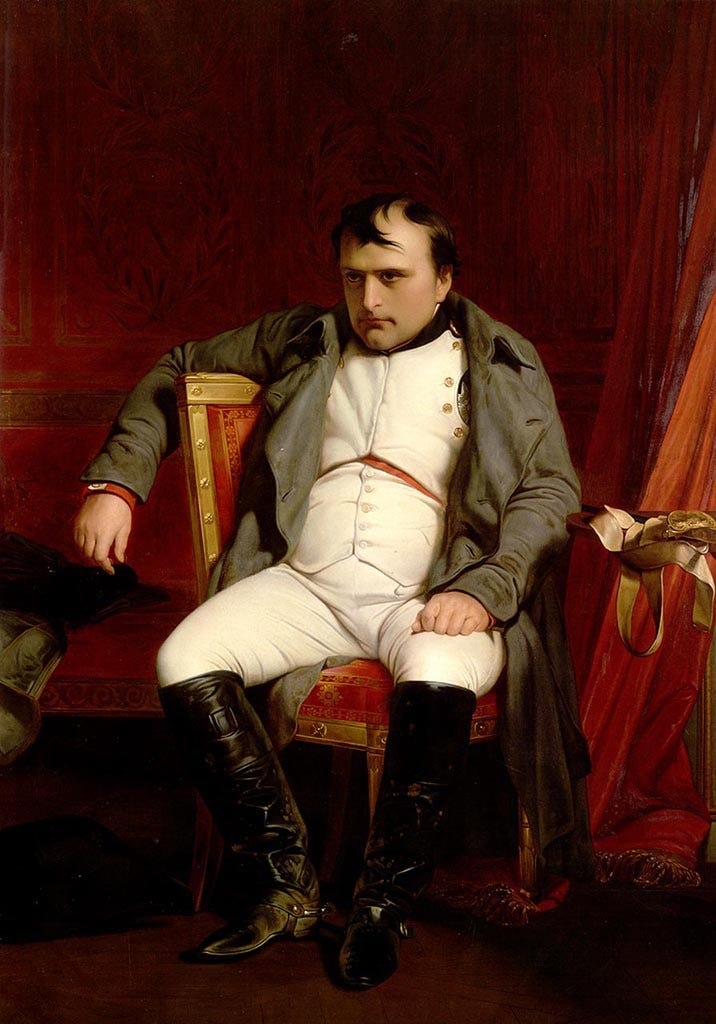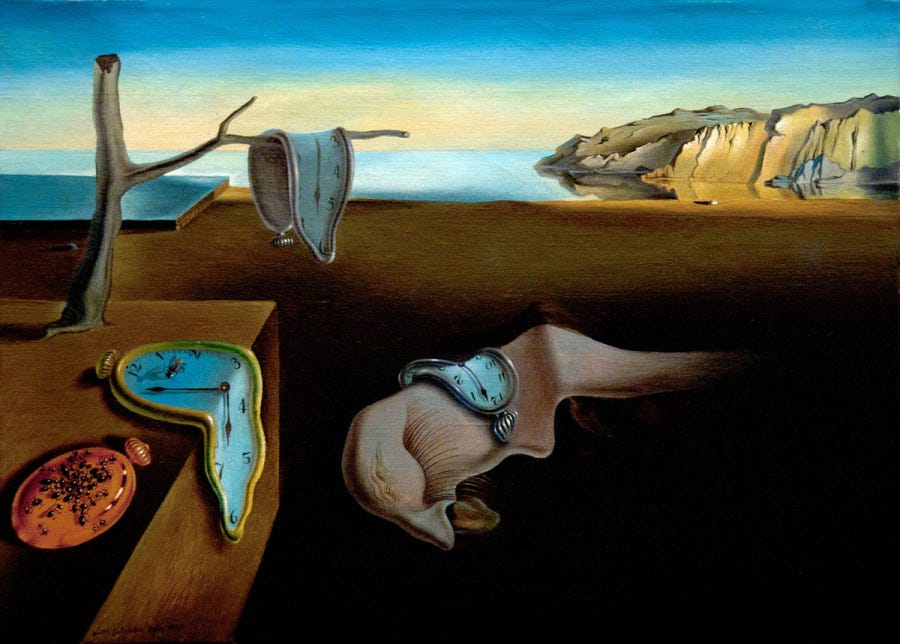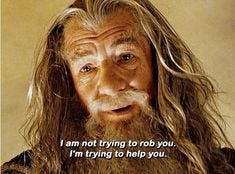This month I’m delighted to have a guest post from Tony Lockett, who has just this week become Head of the Communication Unit at the European Commission’s Directorate General for Research & Innovation (congratulations Tony!) after six years leading the Communication Unit at the European Research Council - so there’s no better person to give us guidance on communicating scientific content. I really enjoyed this one, jam packed full of practical tips, resources and reflections - I hope you do too!
Bridging the science communication gap
Do face masks protect us against respiratory infections? Why are oceans warming faster than predicted? How do algorithms influence what we see on social media? We all need a basic understanding of science to answer questions like these about the increasingly complex world around us.
Public interest in science is at an all-time high, particularly in the aftermath of the Covid pandemic. According to an opinion poll published by the Commission in 2021, 82% of Europeans are interested in new scientific discoveries, but only 66% feel well informed. And the 2024 Edelman Trust Barometer showed that scientists are trusted by people to ‘tell the truth about new innovations and technologies’ (77%, compared with 47% for journalists and 45% for government leaders) but almost half of respondents think that ‘scientists do not know how to communicate with people like me’.
So how can we bridge this science communication gap?
For the last six years, I have had the privilege of working with many of Europe’s top scientists as Head of Unit for Communication at the European Research Council (ERC). I was very happy to accept Tom’s invitation to share a few of the things I have learned along the way. I hope they will be of some use for readers of this newsletter who work with scientists (or experts more generally). So here are seven science communication tips. (Yes, this is a listicle!)
1. Make time
Convincing scientists that it’s worth their while devoting time to communication is the biggest challenge colleagues from European universities and research institutions mentioned to me. Researchers are busy people, especially with academia’s relentless ‘publish or perish’ culture where there is constant pressure to keep up a regular flow of scientific publications.
But incentive structures are changing, with reforms to research assessment and new generations of scientists challenging the status quo. Many funders are now taking other contributions into account when evaluating researchers’ track records. And scientists who go the extra mile deserve recognition. At the European Research Council, we launched a Public Engagement with Research Award to recognise outstanding contributions and share good practices.
2. Be strategic

Like all good communication, it’s important to be clear about what you’re trying to achieve when it comes to talking about science. As communicators, one of the most useful things we can do to support scientists is to help them refine their objectives, to be as specific as possible about the messages they want to convey and the audiences they want to reach. Clarifying these strategic issues at the outset is important before designing a communication plan, planning specific actions and thinking about the right KPIs to measure success. The ERC has published some strategic communication advice for researchers.
3. Choose the right words
In A Sense of Style, Steven Pinker mentions several of the pitfalls that experts face when communicating with non-specialists. These include jargon, abstraction and metaconcepts.
All scientific disciplines have their fair share of acronyms, technical terms and obscure vocabulary. These can be major obstacles to understanding for people outside that specific field. As communicators, we can help scientists to find more accessible ways of expressing their ideas. Flesch-Kincaid reading ease and grade level tests are one way of checking the accessibility of texts. It’s handy that these tests are now incorporated in Word for Microsoft 365.
A lot of science can sound very abstract to the non-initiated. Metaphors can be an effective way of making things more relatable. One scientist told me that he had struggled to explain the risks posed by the exponential increase in Covid cases during the initial phase of the pandemic. It helped when he used the metaphor of a forest fire, with an initial spark spreading rapidly and a need to act quickly to stop things getting out of control.
I find a lot of the advice in Ros Atkins’ book The Art of Explanation relevant to science communication. In particular, he talks about the need to avoid verbal (and visual) distractions. It’s important to make every word count!
4. Reduce complexity
Understandably, scientists who are passionate about a research topic that they have spent decades working on sometimes find it difficult to boil things down into something that is digestible for a non-specialist audience. The best analogy I have heard is the distinction between a full-length film and a movie trailer. Often the trailer version is the one you should aim for. At the ERC, we provided coaching to researchers who appear at events with policy-makers so that they could present a 3-minute pitch. Another great example I have come across is the Ma thèse en 180 secondes initiative from France.
5. Visualise
During my six years at the ERC, one of our biggest successes was the international media campaign around the release of the first image of a black hole. As far as I know, this remains the European Commission’s most popular press conference of all time with over 3 million views. The fact that we had a great image was definitely part of the story’s power.
I have sat through some truly terrible PowerPoint presentations by scientists (slides with too much text, too many graphs with unclear data …). My advice is to simplify as much as possible, and to limit each slide to only one key message. It’s also important to make sure that the speaker is talking about what the audience sees on the screen (the same principle that TV journalists are supposed to follow). Otherwise, the cognitive overload of trying to understand the visuals and the spoken words simultaneously will overwhelm people.
I have also seen very effective use being made of physical objects or props to engage the audience at a science talk. This is something you will often see at science festivals, and I don’t see any reason why it should be reserved for kids!
6. Tell a story
Science lends itself naturally to storytelling, and many scientists make enthusiastic storytellers. Most research follows the typical story arc – there’s an initial idea, the main protagonist makes progress but also faces setbacks and, eventually, there is a resolution in the form of a scientific breakthrough or discovery.
One of the most interesting parts of my job at the ERC has been interviewing researchers for our series of science stories. There are many creative ways of telling stories about science. At the ERC, we experimented with web comics, several of our grantees have produced documentary films (eg the Nanocosmos project) and one of the winners of our Public Engagement with Research Award used art and dance to communicate about particle physics!
7. Build trust
Most science communication focuses on research results and breakthroughs, but those of us who don’t practice science on a daily basis may not fully appreciate the inherent uncertainty of science. The scientific method is based on systematic observation, measurement, and experimentation, as well as the formulation, testing, and modification of hypotheses. This means that scientific knowledge is constantly evolving as new evidence emerges. Obviously, that was extremely challenging during the pandemic when people were anxiously looking for definitive answers.
I recently had a chance to interview two scientists who were thrust into the media spotlight during the pandemic – Irish immunologist Luke O’Neill and Belgian epidemiologist Marius Gilbert. They have some great advice for science communicators, including explaining uncertainty and building trust with the public. You can listen to the full interviews in the ERC’s Frontiers of Research podcast series.
Support for science communication
Many universities and research institutions are moving from a model of centrally controlled communication to one where the communication department empowers and trains researchers to communicate. One of the best examples of this I have seen is the Communication Academy at ETH Zurich. You can find some interesting examples of EU-funded science communication projects in this CORDIS results pack. And it will be interesting to follow the COALESCE project, which aims to establish a new European Competence Centre for Science Communication.
Disclaimer
The personal views expressed by the author of this article do not necessarily reflect the official position of the European Research Council or the European Commission.







